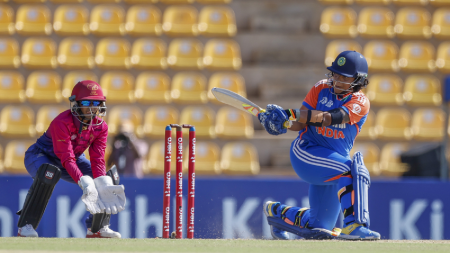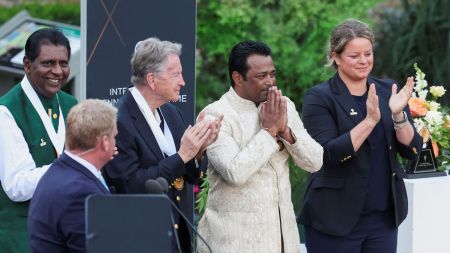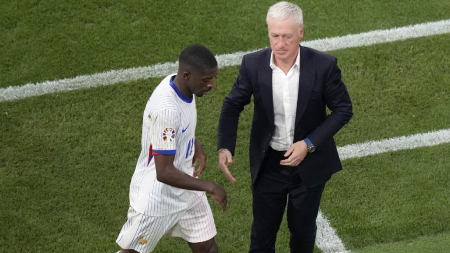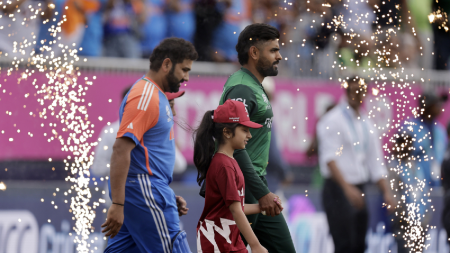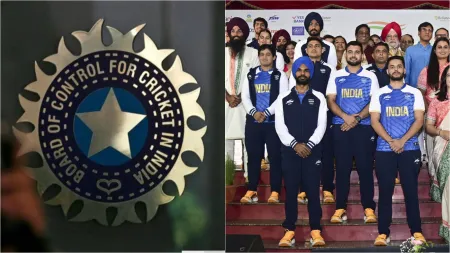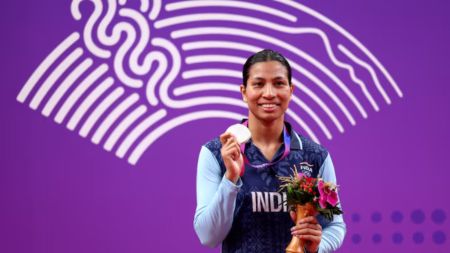Lakshya Sen’s 40-30-20 training grind: How badminton star trains to stay fresh in the 3rd game when match is on the line
For a training drill that can knock the wind out of your lungs and make your legs feel like jelly, the name ‘40-30-20 multi-feed drill’ doesn’t completely capture its full intensity.
But the 40-30-20 multi-feed drill is one of those grinds in training sessions that is meant to infuse a sense of confidence when the tussle on the badminton court enters the third game and the scoreline reads 18-18 or 20-20.

For Lakshya Sen, who has faltered in the third game deciders a few times this year including against Kunlavut Viditsarn in the French Open and Jonatan Christie at the All England, the drill has become a cornerstone for his plans to keep up with his opponents at the Paris Olympics when the clash enters the third game.
“There’s a lot of relation between you being fit and your thinking being a bit different. The fitter you are, the better your thinking and the better decisions you make,” Lakshya tells The Indian Express. “When the rallies stretch long, and you’re playing in the third game, you’ll have an advantage over your opponent if you’re fitter. Personally, it makes a lot of difference to know you’re the fitter person on court. You can see the signs from your opponent that he’s getting tired and he’s not able to play those high-intensity rallies towards the end.”
 India’s Lakshya Sen in action during India Open. (BAI Photo)
India’s Lakshya Sen in action during India Open. (BAI Photo)
So what is this 40-30-20 multi-feed drill, or speed multi-feed drill?
Taken on face value, it’s quite straightforward. Its impact on the body, though, can be punishing. There is a feeder at the one end of the net who will pepper 40 strategically-placed shuttles across the net for Lakshya to return. He does 10 sets of that. For making it to the end of the routine, Lakshya’s reward is a break… of 10 seconds. Then the feeder will hit 10 sets of 30 shuttles in quick succession again. Then, Lakshya is allowed another short break. Then, another 10 sets of 20 shuttles. Once Lakshya reaches the end of this, there are other training routines that he has to participate in.
“In singles, there are a lot of flat exchanges. The game is all about pace these days. Everybody retrieves! This is why multi-shuttle routines are very important elements. You do this on a daily basis,” says Vimal Kumar, Lakshya’s long-time coach.
Simulating match situations
Vimal points out that in training, they tweak the drill to simulate match situations.
“There are a lot of sequences you can do with that drill. With 40 shuttles, sometimes you play a lot of defensive rallies… Lakshya will have to keep the rally going. That’s at an endurance pace. And then sometimes we raise the pace of feeding him the shuttles when it comes to 20 shuttles.”
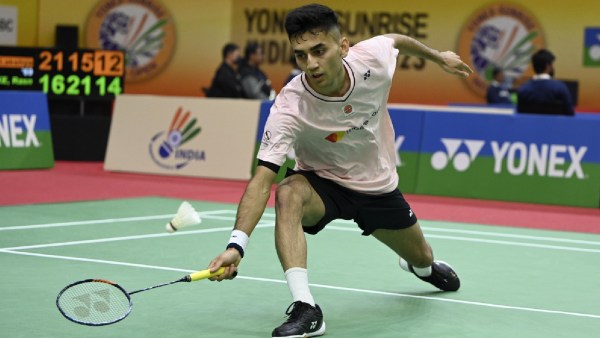 This is going to be the first Olympics for Lakshya Sen. (BAI Photo)
This is going to be the first Olympics for Lakshya Sen. (BAI Photo)
These tweaks prepare Lakshya to continue rallies against the defensive players like Kodai Naraoka and Viditsarn, who love long rallies, as well as players like Viktor Axelsen and Lee Zii Jia who can increase the pace and intensity of a rally at the flick of a switch.
Lakshya points out that while the routine is gruelling in itself, the timing of when they do it is what makes it more effective.
“We do this multi-shuttle routine of 40-30-20 at the end of a training session when I’m really exhausted. Your legs start to feel the load. The heart rate is highly elevated since these are long sessions with very short breaks in the middle. It helps your VO2 max levels (the maximum amount of oxygen someone can use during intense exercise). It’s a really tough one. This lasts around 45 minutes to an hour,” says Lakshya.
He adds: “These sessions help me in court coverage and in overall endurance. It helps in the latter part of matches when you are out of breath and the rallies are stretching long. What makes this effective is that in an actual rally, you don’t play that many shots. If you’re hitting 40 shots, that’s an 80-shot rally which is rare in games.”
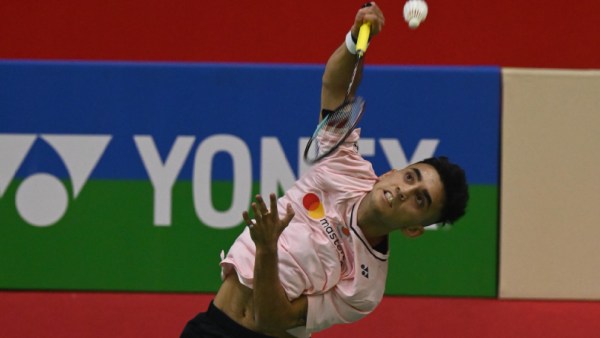 Lakshya Sen in action during the men’s singles Round-of-16 match of the Yonex-Sunrise India Open 2023 at the Indira Gandhi Indoor Stadium in New Delhi on Thursday, January 19, 2023 (BAI Photo)
Lakshya Sen in action during the men’s singles Round-of-16 match of the Yonex-Sunrise India Open 2023 at the Indira Gandhi Indoor Stadium in New Delhi on Thursday, January 19, 2023 (BAI Photo)
Lakshya says his peak VO2 max level is 62, a number he is particularly proud of. For context, elite male cyclists have VO2 max levels in the 70s. “I’m not too proud of the gym numbers. But VO2 max is something that I look for,” he says.
Ask Lakshya — who has a score of 22.4 on the yo-yo test — who he thinks is the fittest player in the circuit and he grins, “Me.”
Of course there are other training drills that he does to stake claim to the tag of being fittest player on the circuit.
“We usually train seven to eight hours a day including recovery, strength and conditioning or the on-court part,” he says. “There are different kinds of things that we do. If we are in an off-season period where we know that there is no competition for the next three to four weeks then we usually do a long run, like an eight-kilometer run under 35 minutes. Then, maybe a 400m run or 2.4 kilometers within nine minutes.”
Closer to the tournaments, he adds, the sessions get shorter and intense ‘with sprints and other outdoor training like Tabata runs’ (a high-intensity interval training routine where you do multiple rounds of strenuous exercises in quick succession). “Or we run on the treadmill for 30 seconds and then rest for 15 seconds.”
At Paris 2024, Lakshya has been drawn in Group L, one of the only two groups that have four players while the rest of the groups have three players. He’s clubbed with Jonatan Christie and Kevin Cordon, expected to test his patience. In the quarters, there’s potentially Kodai Naraoka, the endless retriever.
All the work he has been putting into his endurance training will come handy early. But essentially his opponents know he’s not going away without a fight, and dread that he won’t go away at all. Lakshya’s superpower in Group L might well be to be the Last Man Standing.
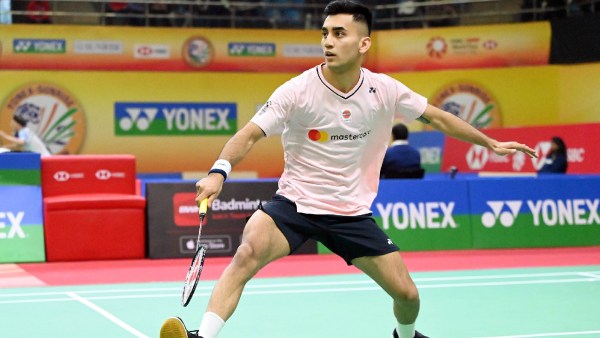 India’s Lakshya Sen in action during the men’s singles Round-of-16 match of the Yonex-Sunrise India Open 2023 at the Indira Gandhi Indoor Stadium in New Delhi on Thursday, January 19, 2023. (BAI Photo)
India’s Lakshya Sen in action during the men’s singles Round-of-16 match of the Yonex-Sunrise India Open 2023 at the Indira Gandhi Indoor Stadium in New Delhi on Thursday, January 19, 2023. (BAI Photo)
What Lakshya Sen’s week looks like:
Monday and Thursdays: Lakshya starts at 6 am with an outdoor running session. This happens thrice a week. Runs from 6 to 7 am. From 10 am to noon, he will have an on-court badminton session. In the evenings, he will have another session from 3:30 till 6 pm. After the evening session ends, he will have one and a half hours of recovery session.
Tuesdays and Fridays: Tuesdays and Fridays are also heavy working days.
Wednesday and Saturdays: After two good days of training, these two days are half days. Lakshya only trains in the first half, and the evenings are off to recover. He spends more time on recovery here after the running and the playing sessions. This day is reserved for recovery activities like ice baths and full-body massages. Or spending 15 to 20 minutes in the hydrotherapy pool and compression wear for limbs.
Sundays: Weekly off for Lakshya to recover. On Sundays, he tries to switch off from badminton and not think too much about it. He, however, plans his coming week. Lakshya does about an hour and half of recovery sessions on Sunday mornings because his weekly training load has been high. Or he will at least do some stretching, because he doesn’t want to just sit and laze around. He tries to be active on Sundays — you take a walk or go out for meals — so the next day you don’t feel too lethargic.
Disclaimer: The copyright of this article belongs to the original author. Reposting this article is solely for the purpose of information dissemination and does not constitute any investment advice. If there is any infringement, please contact us immediately. We will make corrections or deletions as necessary. Thank you.
